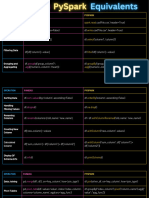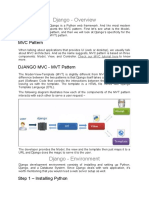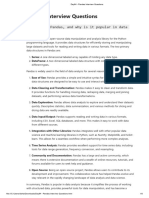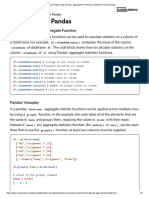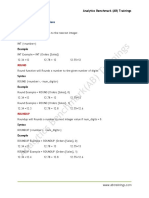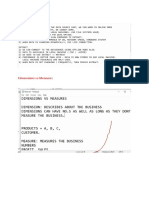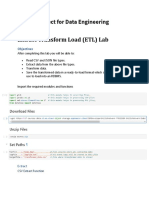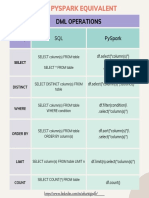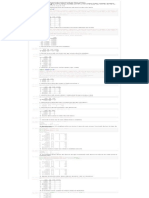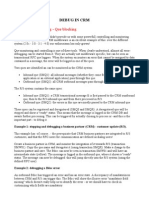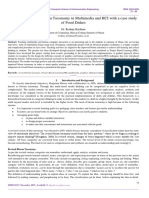pandas_basics_practice
April 7, 2021
Consider the following Python dictionary data and Python list labels:
data = {‘birds’: [‘Cranes’, ‘Cranes’, ‘plovers’, ‘spoonbills’, ‘spoonbills’, ‘Cranes’, ‘plovers’, ‘Cranes’,
‘spoonbills’, ‘spoonbills’], ‘age’: [3.5, 4, 1.5, np.nan, 6, 3, 5.5, np.nan, 8, 4], ‘visits’: [2, 4, 3, 4, 3, 4,
2, 2, 3, 2], ‘priority’: [‘yes’, ‘yes’, ‘no’, ‘yes’, ‘no’, ‘no’, ‘no’, ‘yes’, ‘no’, ‘no’]}
labels = [‘a’, ‘b’, ‘c’, ‘d’, ‘e’, ‘f’, ‘g’, ‘h’, ‘i’, ‘j’]
1. Create a DataFrame birds from this dictionary data which has the index labels.
[1]: import pandas as pd
import numpy as np
data = {'birds': ['Cranes', 'Cranes', 'plovers', 'spoonbills', 'spoonbills',␣
,→'Cranes', 'plovers', 'Cranes', 'spoonbills', 'spoonbills'],
'age': [3.5, 4, 1.5, np.nan, 6, 3, 5.5, np.nan, 8, 4],
'visits': [2, 4, 3, 4, 3, 4, 2, 2, 3, 2],
'priority': ['yes', 'yes', 'no', 'yes', 'no', 'no', 'no', 'yes', 'no',␣
,→'no']}
labels = ['a', 'b', 'c', 'd', 'e', 'f', 'g', 'h', 'i', 'j']
df=pd.DataFrame(data, index=labels)
df
[1]: birds age visits priority
a Cranes 3.5 2 yes
b Cranes 4.0 4 yes
c plovers 1.5 3 no
d spoonbills NaN 4 yes
e spoonbills 6.0 3 no
f Cranes 3.0 4 no
g plovers 5.5 2 no
h Cranes NaN 2 yes
i spoonbills 8.0 3 no
j spoonbills 4.0 2 no
2. Display a summary of the basic information about birds DataFrame and its data.
[114]: df.columns
1
�[114]: Index(['birds', 'age', 'visits', 'priority'], dtype='object')
[115]: df.describe()
[115]: age visits
count 8.000000 10.000000
mean 4.437500 2.900000
std 2.007797 0.875595
min 1.500000 2.000000
25% 3.375000 2.000000
50% 4.000000 3.000000
75% 5.625000 3.750000
max 8.000000 4.000000
3. Print the first 2 rows of the birds dataframe
[43]: df.iloc[[0,1]]
[43]: birds age visits priority
labels
a Cranes 3.5 2 yes
b Cranes 4.0 4 yes
4. Print all the rows with only ‘birds’ and ‘age’ columns from the dataframe
[52]: df[['birds','age']]
[52]: birds age
labels
a Cranes 3.5
b Cranes 4.0
c plovers 1.5
d spoonbills NaN
e spoonbills 6.0
f Cranes 3.0
g plovers 5.5
h Cranes NaN
i spoonbills 8.0
j spoonbills 4.0
5. select [2, 3, 7] rows and in columns [‘birds’, ‘age’, ‘visits’]
[60]: df.loc[['b','c','g'],['birds','age','visits']]
[60]: birds age visits
labels
b Cranes 4.0 4
c plovers 1.5 3
g plovers 5.5 2
2
� 6. select the rows where the number of visits is less than 4
[59]: filt=df['visits']<4
df[filt]
[59]: birds age visits priority
labels
a Cranes 3.5 2 yes
c plovers 1.5 3 no
e spoonbills 6.0 3 no
g plovers 5.5 2 no
h Cranes NaN 2 yes
i spoonbills 8.0 3 no
j spoonbills 4.0 2 no
7. select the rows with columns [‘birds’, ‘visits’] where the age is missing i.e NaN
[2]: filt= df['age'].isnull()
df[filt][['birds','visits']]
[2]: birds visits
d spoonbills 4
h Cranes 2
8. Select the rows where the birds is a Cranes and the age is less than 4
[68]: filt=(df['birds']=='Cranes') & (df['age']<4)
df[filt]
[68]: birds age visits priority
labels
a Cranes 3.5 2 yes
f Cranes 3.0 4 no
9. Select the rows the age is between 2 and 4(inclusive)
[70]: filt=(df['age']>=2) & (df['age']<=4)
df[filt]
[70]: birds age visits priority
labels
a Cranes 3.5 2 yes
b Cranes 4.0 4 yes
f Cranes 3.0 4 no
j spoonbills 4.0 2 no
10. Find the total number of visits of the bird Cranes
[71]: df[df['birds']=='Cranes']['visits'].sum()
3
�[71]: 12
11. Calculate the mean age for each different birds in dataframe.
[76]: birds_grp=df.groupby('birds')
birds_grp['age'].mean()
[76]: birds
Cranes 3.5
plovers 3.5
spoonbills 6.0
Name: age, dtype: float64
12. Append a new row ‘k’ to dataframe with your choice of values for each column.
Then delete that row to return the original DataFrame.
[106]: df.loc['k']=['Sparrow',3,4,'yes']
df
[106]: birds age visits priority
labels
a Cranes 3.5 2 yes
b Cranes 4.0 4 yes
c plovers 1.5 3 no
d spoonbills NaN 4 yes
e spoonbills 6.0 3 no
f Cranes 3.0 4 no
g plovers 5.5 2 no
h Cranes NaN 2 yes
i spoonbills 8.0 3 no
j spoonbills 4.0 2 no
k Sparrow 3.0 4 yes
[111]: df=df.drop('k')
df
[111]: birds age visits priority
labels
a Cranes 3.5 2 yes
b Cranes 4.0 4 yes
c plovers 1.5 3 no
d spoonbills NaN 4 yes
e spoonbills 6.0 3 no
f Cranes 3.0 4 no
g plovers 5.5 2 no
h Cranes NaN 2 yes
i spoonbills 8.0 3 no
j spoonbills 4.0 2 no
4
� 13. Find the number of each type of birds in dataframe (Counts)
[73]: df['birds'].value_counts()
[73]: spoonbills 4
Cranes 4
plovers 2
Name: birds, dtype: int64
14. Sort dataframe (birds) first by the values in the ‘age’ in decending order, then by
the value in the ‘visits’ column in ascending order.
[116]: df.sort_values(by=['age','visits'],ascending=[False,True])
[116]: birds age visits priority
i spoonbills 8.0 3 no
e spoonbills 6.0 3 no
g plovers 5.5 2 no
j spoonbills 4.0 2 no
b Cranes 4.0 4 yes
a Cranes 3.5 2 yes
f Cranes 3.0 4 no
c plovers 1.5 3 no
h Cranes NaN 2 yes
d spoonbills NaN 4 yes
15. Replace the priority column values with’yes’ should be 1 and ‘no’ should be 0
[101]: def replace_priority(x):
if x=='yes':
return 1
else:
return 0
df['priority'].apply(replace_priority)
df
[101]: birds age visits priority
labels
a trumpeters 3.5 2 1
b trumpeters 4.0 4 1
c plovers 1.5 3 0
d spoonbills NaN 4 1
e spoonbills 6.0 3 0
f trumpeters 3.0 4 0
g plovers 5.5 2 0
h trumpeters NaN 2 1
i spoonbills 8.0 3 0
j spoonbills 4.0 2 0
16. In the ‘birds’ column, change the ‘Cranes’ entries to ‘trumpeters’.
5
�[91]: df['birds']=df['birds'].replace({'Cranes':'trumpeters'})
df
[91]: birds age visits priority
labels
a trumpeters 3.5 2 yes
b trumpeters 4.0 4 yes
c plovers 1.5 3 no
d spoonbills NaN 4 yes
e spoonbills 6.0 3 no
f trumpeters 3.0 4 no
g plovers 5.5 2 no
h trumpeters NaN 2 yes
i spoonbills 8.0 3 no
j spoonbills 4.0 2 no
[ ]:

